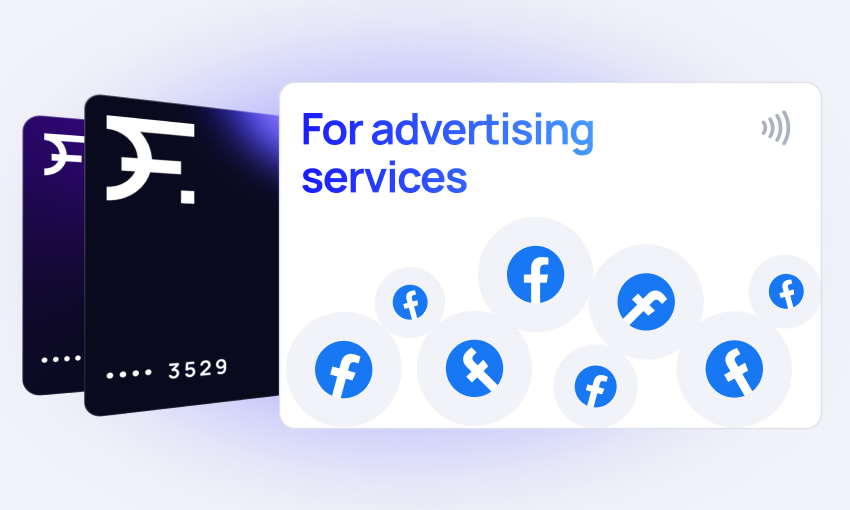Issue card


“More means better.” When it comes to ads on Facebook, this phrase isn’t always true. If you’re new to Facebook Ads and want to run effective promotions, you don’t need to throw your entire marketing budget into the platform right away.
Instead, it’s essential to approach the question, “How much should I spend on advertising?” more strategically. You can test your campaigns and gain valuable insights with small budgets, while thousands of dollars spent may yield zero results.
In this article, we’ll explain what it depends on, how to leverage algorithms, and how to align your ad spend with business goals so that every dollar works for you.
To avoid wasting money. A clear strategy for platforms like Facebook ensures that every dollar you invest has a purpose. Here’s why it matters:
First and foremost, you need to understand that there’s no universal answer to the question, “How much should I spend on Facebook ads?” Everything depends on the situation, and the benchmark can result from dozens of factors. The main ones to keep in mind are:
Now, we’ll break down the main steps to find out how much you should spend on Facebook ads.
Before diving into big numbers, you can determine the average cost per action by running a test campaign. A smaller budget gives you room to experiment without risking too much. Try different ad creatives, placements, audience segments, and bidding strategies. Helpful tips:
A lower stage in the sales funnel means a higher cost per target action. Here’s why:
When you’re running an ad, the location of your audience directly influences how much you should spend on Facebook ads. For the US and Western Europe, the CPA might be several times higher than for the same campaigns focused on Eastern Europe and Asia.
This is because audiences with higher incomes typically have a higher cost. Nevertheless, they can also bring high ROI.
Also, broader audiences usually come with lower costs than more narrow ones. However, clicks from a wide audience may be less qualified, which means that fewer people will take the desired action. Narrow, highly targeted audiences can cost more, but the people who do click are more likely to convert.
Competition in the industry directly influences the advertising budget. For instance:
According to recent benchmarks, the cost per click (CPC) and cost per thousand impressions (CPM) vary widely by sector. You can always find tables showing average costs per industry, which help you set realistic budgets. For a deeper dive into budgeting costs, you can read this article.
Using Ads Manager makes it easier to monitor and adjust your budgets in real time. Yet, let’s break down spending levels more concretely so you have all the info in one place.
Small businesses can start with $20–$30 per day for testing. As campaigns stabilize, you can scale spending to $50–$100 per day.
If you prefer weekly budgeting, think in terms of $350–$700 per week for modest campaigns. This allows you to collect enough data without overspending.
For longer-term planning, most small to medium businesses allocate $1,000–$3,000 per month to run multiple campaigns and test different audiences. Larger companies or enterprises may spend $10,000+ per month, depending on goals, competition, and industry.
No matter the business size, there’s always a chance to improve your Instagram or Facebook ad performance. Nevertheless, in this case, the approach to budgeting and cost distribution will differ. Here are the most prominent tips for various companies.
Finup cards can be another great choice for businesses of any size. They allow you to launch promotional campaigns quickly and without worrying about complex setup. Forget about spending limits, rejected transactions, or lack of flexibility. Assign roles and permissions to team members, control budgets for each campaign, and track spending and results in real time.
It’s impossible to pick one clear number for how much money you need to spend on your promotional campaigns. However, there are clear tips and strategies that will let you avoid overspending. Analyze your current strategy in terms of goals, target audience, industry competition, timeframe, and previous results. Compare how much money you plan to spend with the average number based on the size of your business. Finally, keep testing and adjusting campaigns based on real data.
The daily spending may vary from $20-$30 daily for small businesses to $500+ per day for high-volume campaigns within big companies.
For small businesses, it’s better to start from $20-$30 per day. While some experts may recommend lower spending and suggest that beginning from $5 may work, in reality, such a small budget may not be enough to gather enough data and identify which campaigns really work best.
Finance, insurance, legal services, technology, and real estate are considered the most demanding. Among the factors that influence such distribution are:

Share your email so we can send you latest Finup news & updates
You can unsubscribe at any time.